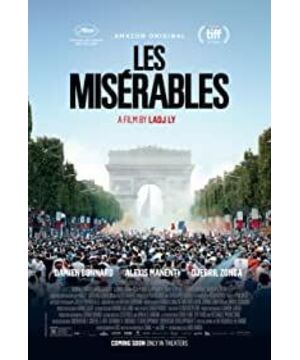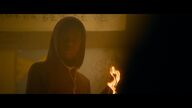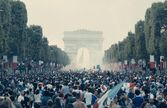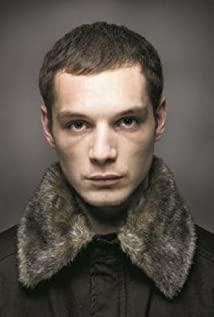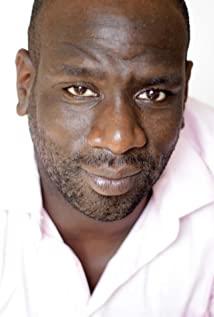It's a world more tragic than Hugo's, a world called reality.
The movie started in a carnival. In 2018, the French team reached the final all the way, defeated Croatia 4:2, and won the World Cup championship. The beginning of the movie was the national carnival after the victory. Director Raj Leigh said: "Football is a sport that does not discriminate between race and class, and all citizens are proud of their country when they win." Waving the flag and twitching the muscles of their faces, they are the happiest people in the world. But at this time, he began to ease into the mixed music of saxophone and electronic music, showing a paradoxical sense of alienation. At the same time, in contrast to the previous close-up and close-up, he cut into the grand vista of the Arc de Triomphe, showing the movie title "Tragic" amid the crowds. world". Such a method of handling immediately made the tone of the film clear. The great national integration is only a temporary illusion, and behind this is the tragic reality.
The story takes place on the outskirts of Paris, which is a mixed place where immigrants such as Africans and Muslims mainly live. The male protagonist is Stephen, a police officer who has just been transferred here, along with two other police officers, Chris and Vada, who have been here all the time. They're driving a routine patrol inspection today. Before that, a foreshadowing of an African-American child playing with a drone was inserted. When filming, the director hardly used fixed shots. Whether it was Stephen communicating with colleagues in the police station or discussing crimes in the car, he used a lot of hand-held shots to directly shoot the facial expressions of the characters in small scenes such as close-up and close-up. Speech movements and body gestures, etc. This way of handling greatly deepens the film's sense of presence and documentary, allowing the audience to bring emotions to the new police officer, and a stronger dramatic tension erupts at the later plot points.
The male protagonist and a group of people patrolled the market and met the black boss nicknamed "Mayor". The "Mayor" is an African-American, covering the local African-American children. Suddenly, a van scolds the "Mayor" on the radio. It turns out that a small lion in the gypsy circus was stolen by an African-American child, and they came to the "Mayor" to settle accounts. The male lead group persuaded them to let them go and wanted to help the circus find the little lion. In this confrontation, the shooting methods of fast zooming, panning, and shallow depth of field were widely used under the hand-held lens. In addition to enhancing the sense of presence, the contrast between different races was enhanced at the photographic level. The camera shuttles on people of different skin colors, they speak different words, have different cultural backgrounds, and have different interest demands. In such a small scene, the three ethnic groups are distributed in a triangle. Become alive and powerful, and together constitute the tiny souls struggling in this miserable world.
The male protagonist's group found the little boy stealing the lion on the football field, and they started a chase. Here, the two groups of people chased with different shooting strategies. The male protagonist followed the camera quickly, while the little boy panned the camera at a fixed point, which made the audience feel unattainable and enhanced the expressiveness of this section. . But in the end the little boy was chased, but a group of children started attacking the male protagonist and his party. Under the sharp and fast editing, the camera suddenly focused on the black policeman Wada, a shot was fired, and Wada hit the thief with a rubber bullet. Little boy with lion. Luckily, this scene was filmed by a drone. The angle of view shifted from the ground to the sky, and the child who was playing with the drone captured a scene that was enough to provoke a social revolution.
The next plot is a struggle between all parties. The male protagonist and his party find the African-American landowner who opposes the "Mayor". The "Mayor" hopes to blackmail the police with this video, and the drone kid finds the religious leader Sarah Heh, three forces compete in a small fast food restaurant. The director shows a clear scheduling idea here. The perspective is first with Salah and the little boy, and then the "mayor" comes, and the perspective alternates to form a confrontation. Then the police arrived, and the emotional tension reached its climax, forming an emotional "Mexican stalemate". In the end, the male protagonist came forward and terminated further conflicts.
The lion cub was finally found, and the police took the kid who stole the lion to apologise to the gypsies, but they put him in a lion cage to frighten him. And Chris in the police force also forced the little boy not to tell the story of being shot. Chris hates the male protagonist's false justice and quarrels with him. This is a typical reversal shot, but it still only uses a small difference smaller than the close-up, which makes this conflict seem tense and breath-taking.
After the incident subsided, the director rarely inserted a few empty mirrors to show the appearance of all beings in Paris, which relieved the previous tension to a certain extent.
The little boy who was threatened was too angry, so he entangled a group of children and blocked the male protagonist and his party on the stairs, and began to attack continuously. They were cornered, the male protagonist aimed a gun at the little boy, the little boy lit the Molotov cocktail, and the movie stopped abruptly at this moment.
The overall tone of the film is a high-key warm color, and in the previous conflict, a large part of the plot took place outdoors. The outdoor sunshine is bright, reducing the use of artificial light and using a lot of natural light, which shows that all kinds of conflicts have actually become accustomed to everyone, and can no longer be regarded as "conflicts". In the face of different skin colors, there is no equal opportunity to communicate.
Musically, apart from the blurred electronic music in the beginning and the end of the atmosphere, there is no other music to lay the foundation. This further deepens the film's sense of documentary and presence. This is telling the audience the story, not a fake, made-up story, but something that happens all the time.
Servicing is the hard part in this movie because it involves different races, different cultures. But the whole film feels natural, the big Muslim beard, the black dreadlocks of the woman, the police body armor, and the hoodies everyone wore to the black kids at the end of the frenzy. The way of serving the movie is a bonus item of the movie, which enhances the overall appeal, gives distinct characters to different characters, facilitates the audience to watch the movie, and renders emotions when the dramatic tension erupts.
The film ends with a quote from Hugo's "Les Miserables": "Remember this, my friends, there are no bad crops in the world, and no bad people, only bad people." The racial conflict in the film is a common dilemma in immigrant countries and regions. Now the Latino immigrants in the United States are close to 20%, and the force is enough to change the direction of the country. This predicament is a dead end. Just like the end of the movie, no one has a solution. Whether the police shoot or the boy throws Molotov cocktails, it cannot be changed. Conflict and hatred will never end. This is the truth of "Les Miserables".
View more about Les Misérables reviews


